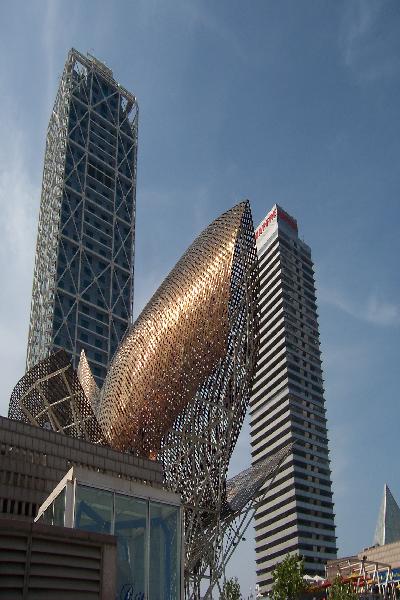 The Olympic village of Poblenou is the symbol of the new Barcelona, the embodiment of the sports and cultural power of Spain. The Summer Olympics, held in 1992 in Barcelona, were the most significant event in the modern history of the city and the most successful investment project. The budget for the Olympic project cost Spain $ 1.8 billion (the largest amount in the world history of the Games at that time).
The Olympic village of Poblenou is the symbol of the new Barcelona, the embodiment of the sports and cultural power of Spain. The Summer Olympics, held in 1992 in Barcelona, were the most significant event in the modern history of the city and the most successful investment project. The budget for the Olympic project cost Spain $ 1.8 billion (the largest amount in the world history of the Games at that time).
It was decided to build the Olympic village on the Mediterranean coast, behind the Ciutadella park, in the Poblenou industrial area, which the people of Barcelona named it "Catalan Manchester". The old neighboring fishing area of Barcelonetta was not built but has remained intact until today. The prestigious and modern neighborhood of La Villa Olímpica has grown alongside it. The new buildings have radically changed the appearance of Barcelona. A residential and tourist complex with innovative architecture has grown in the heart of the city, by the sea. The coast, previously occupied by warehouses and old businesses, has been landscaped under the new concept. The factories were demolished or relocated and new roads were brought to the area.
Most of the sports facilities for the Olympics were built on Mount Montjuïc. This sports complex is called the Olympic Ring. The futuristic television tower designed by Santiago Calatrava, the Olympic Stadium, the outdoor swimming pool, the São Jordi Sports Palace and other structures built at that time are used successfully today by the authorities and residents of the city. All the Olympic facilities were built under the patronage of Santiago Roldán, then head of the Barcelona Holding Olimpic construction company.

Barcelona Zoo
It is one of the most famous parks in Barcelona and this is due to its possession (Snowflake), a rare gorilla that died in 2003. It also inc